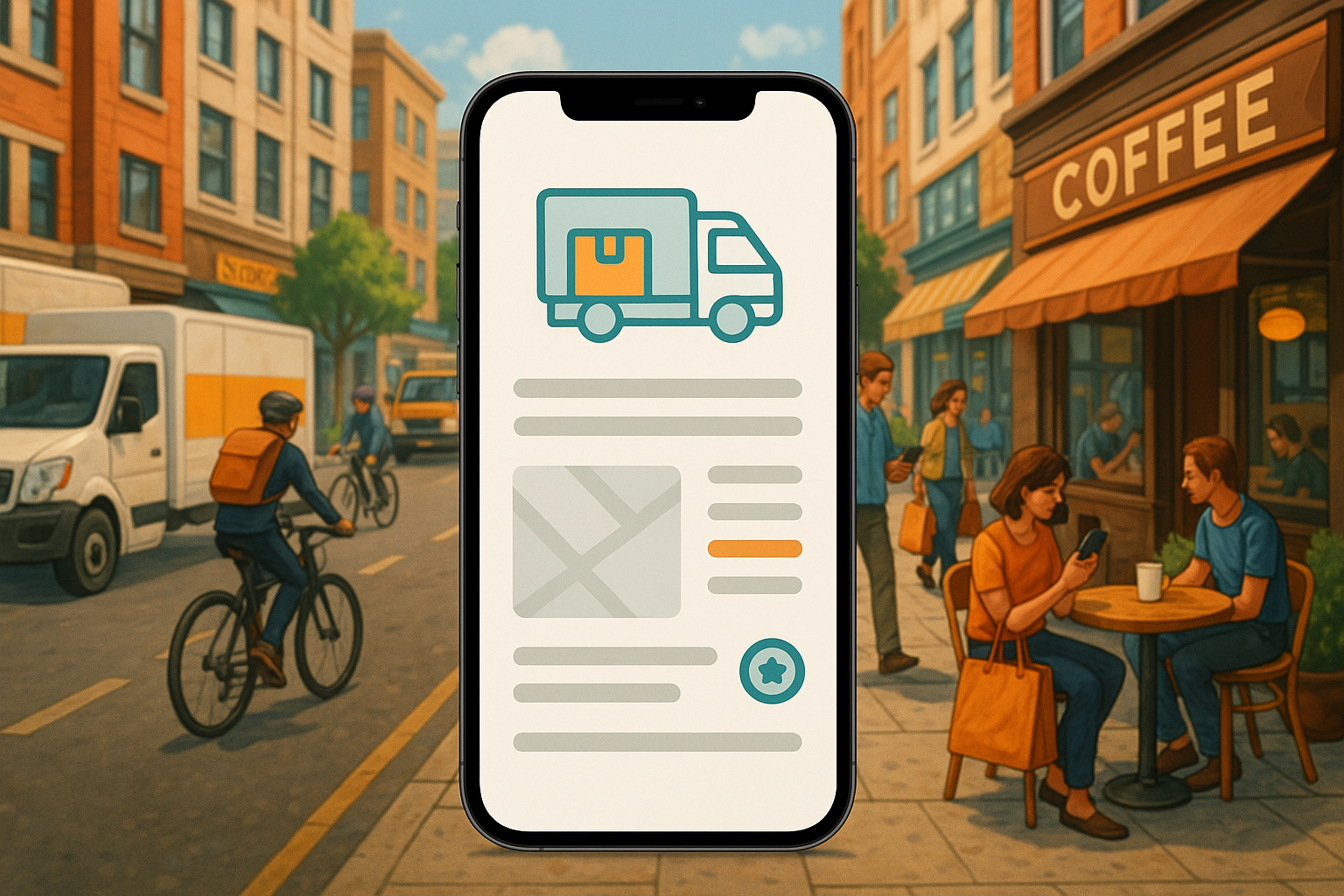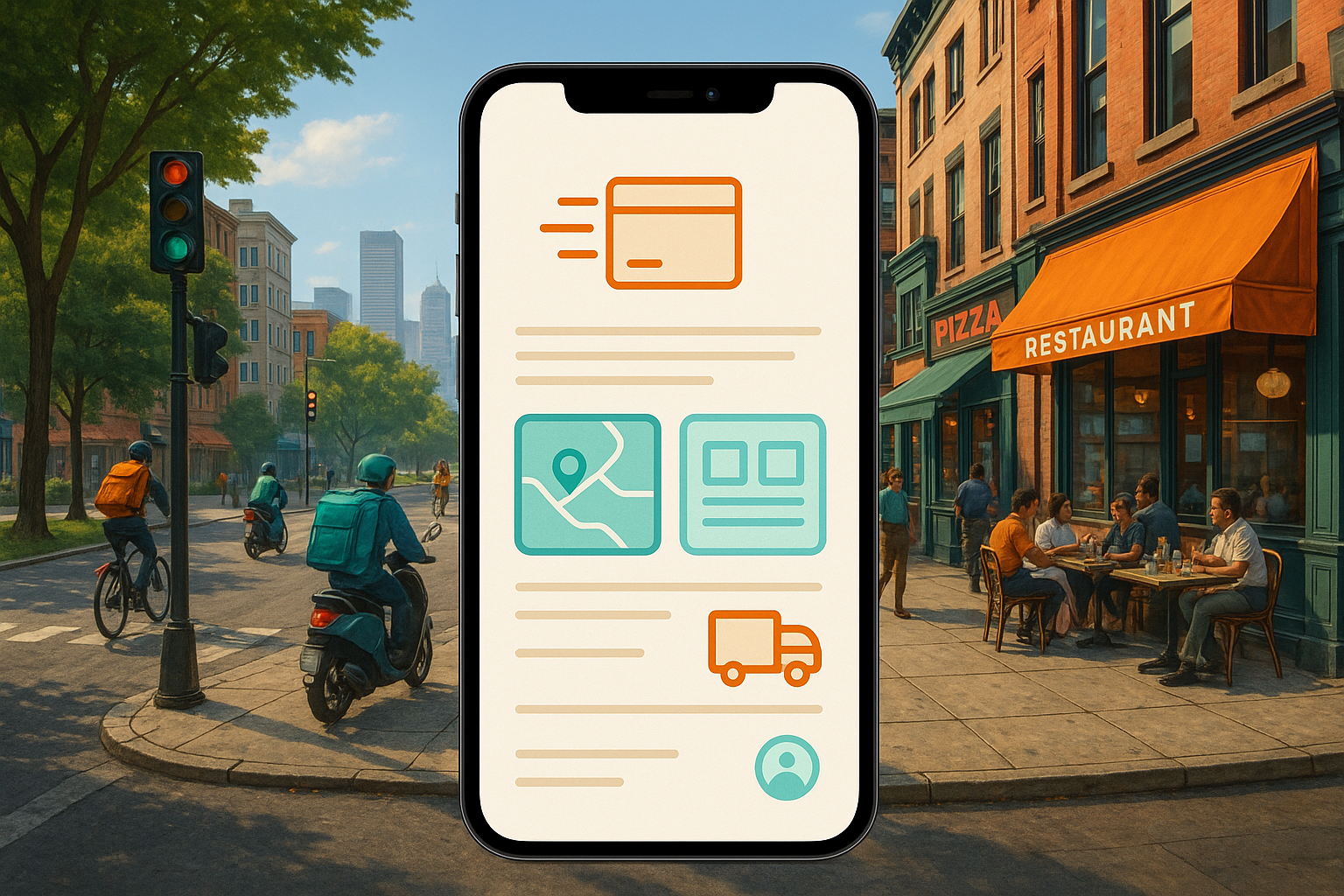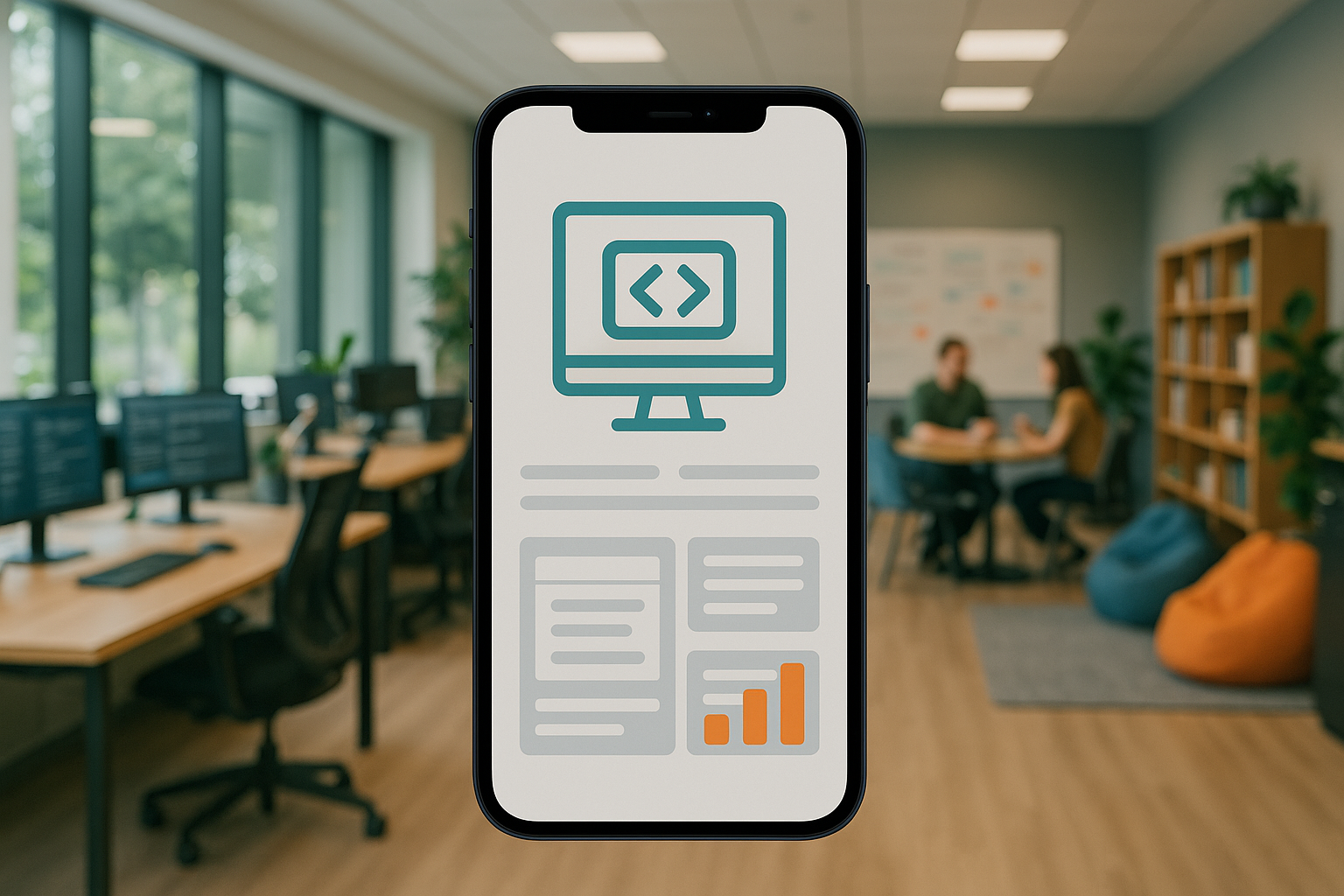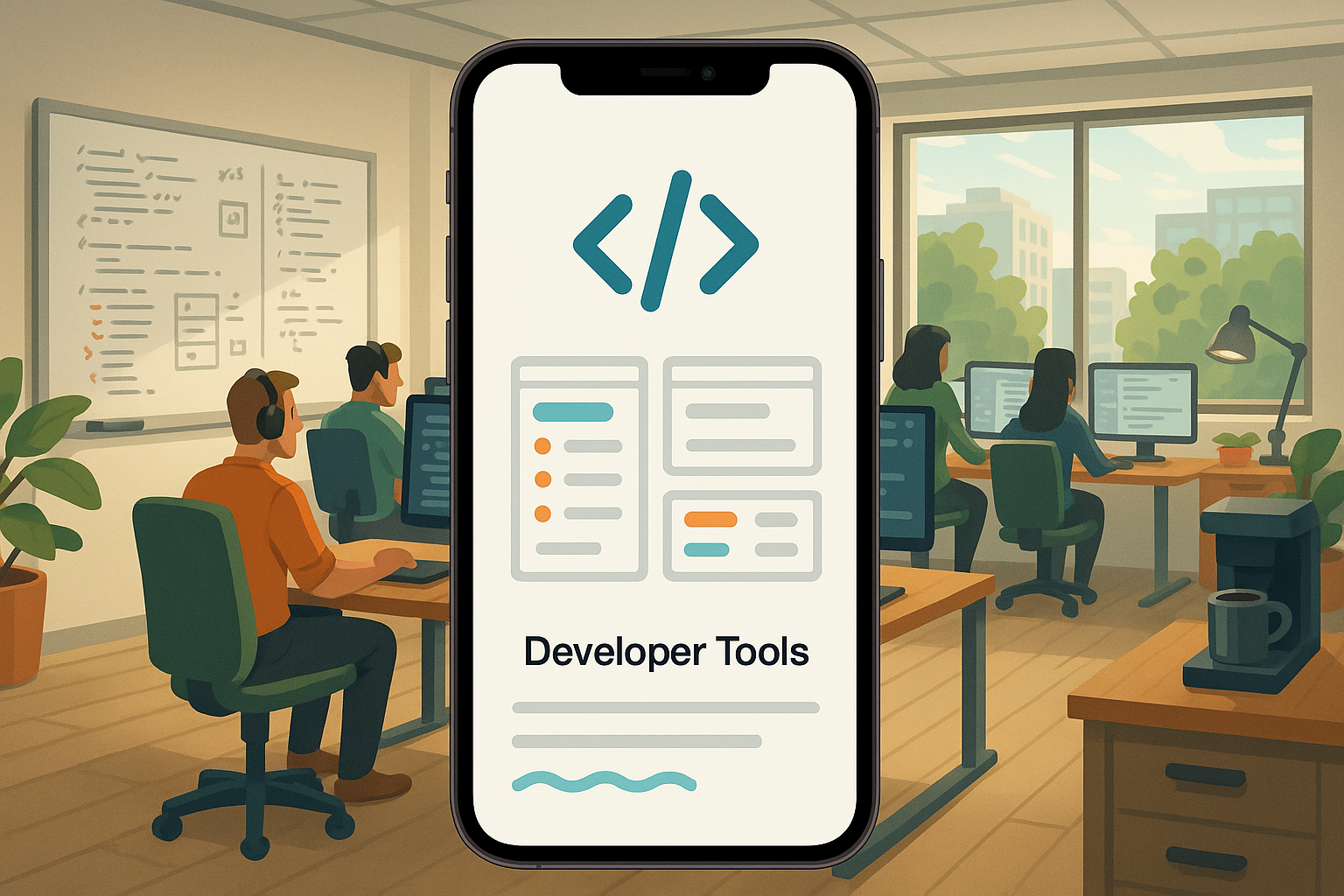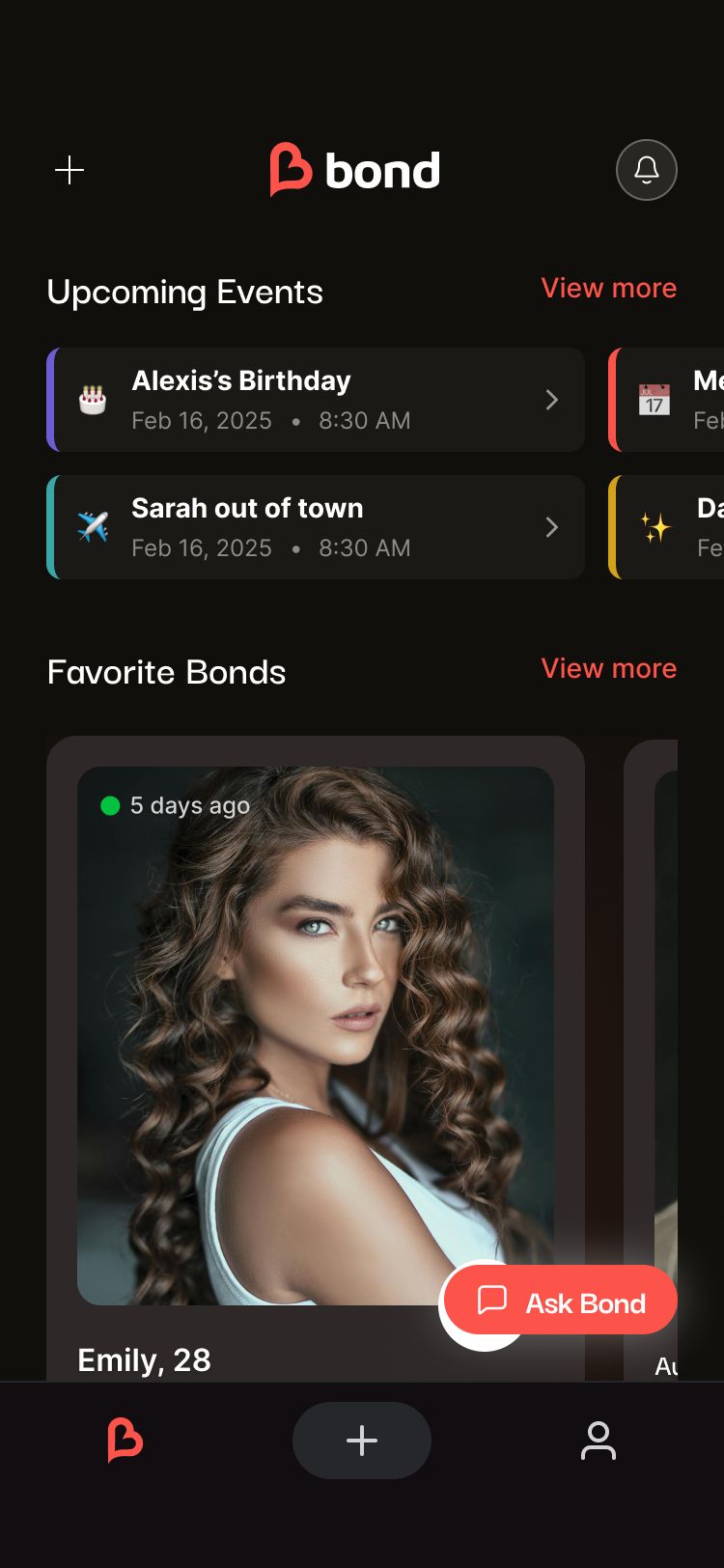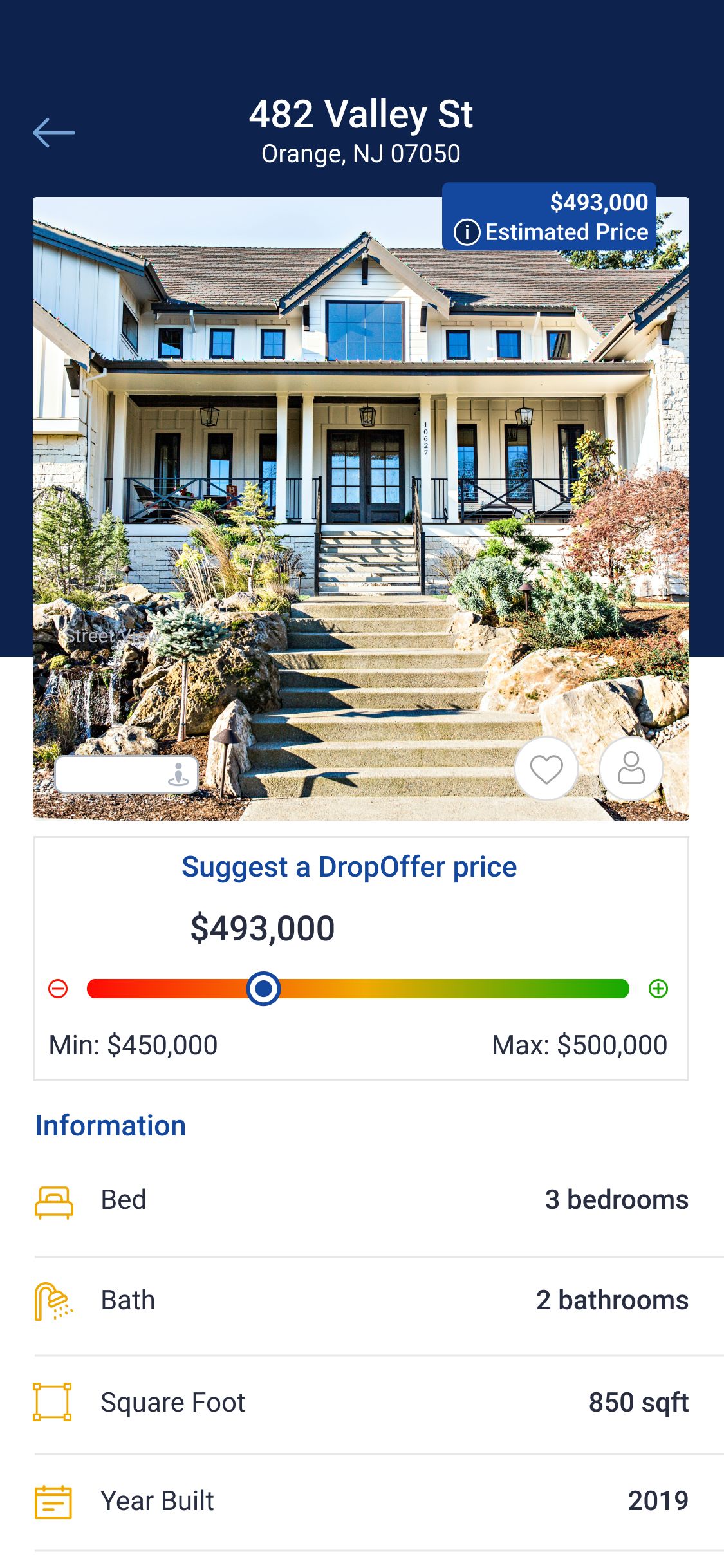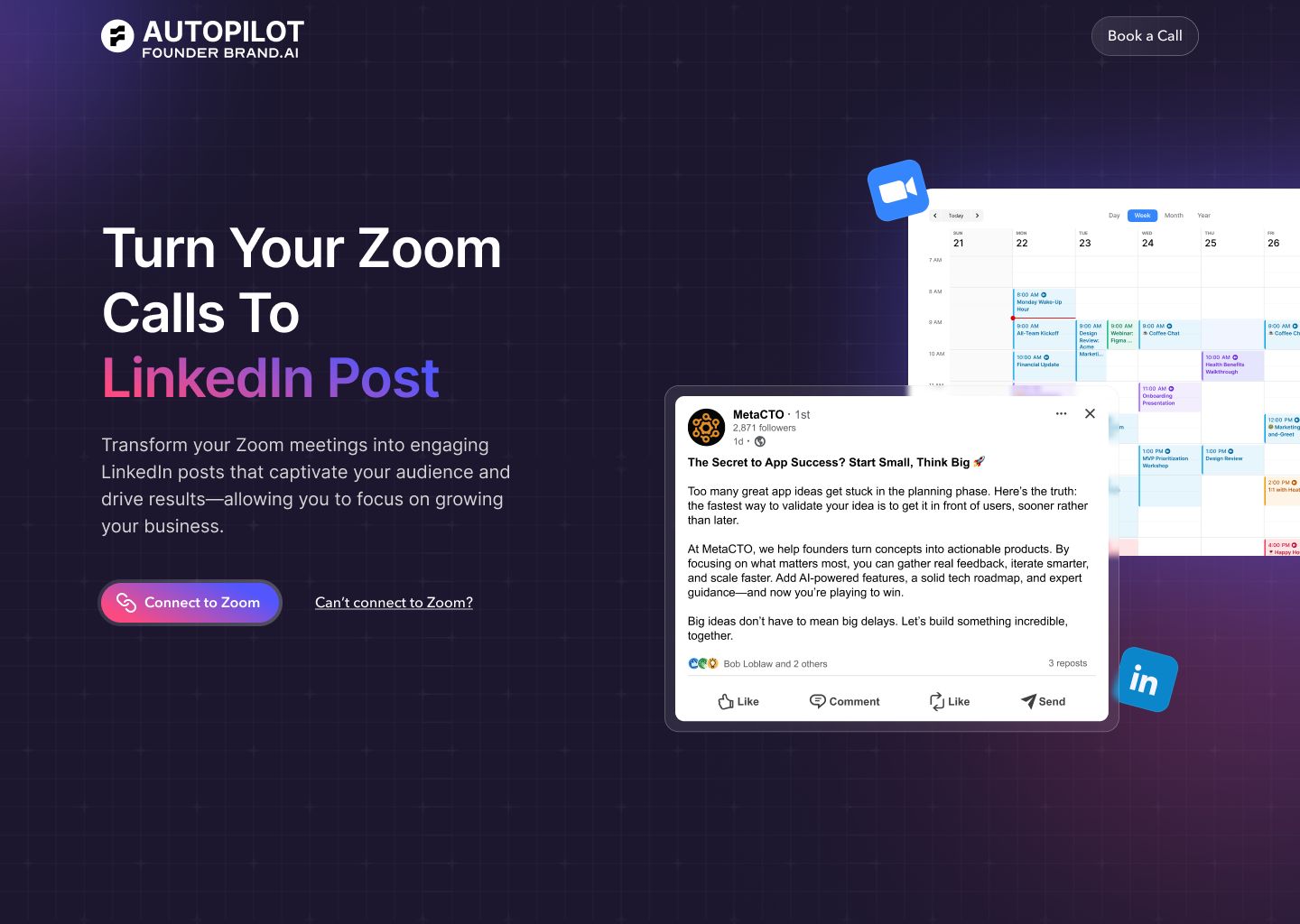Introduction
In today’s fast-paced, convenience-driven world, the on-demand economy has fundamentally reshaped consumer expectations. From groceries and restaurant meals to packages and professional services, users now expect to get what they want, when they want it, with a simple tap on their smartphones. At the heart of this revolution lies the delivery service application—a complex digital ecosystem that appears deceptively simple to the end-user.
However, for businesses and entrepreneurs looking to enter this lucrative market, the journey from idea to a fully functional, scalable delivery app is fraught with challenges. The process involves far more than just creating a user-friendly interface; it requires building a robust backend, managing intricate logistics, ensuring real-time communication across multiple user types, and navigating significant financial and temporal investments. Many ambitious projects falter when confronted with these operational and technical realities.
This comprehensive guide is designed to demystify the process of delivery service app development. We will explore the core components of these applications, dissect the formidable challenges of building one in-house, and categorize the different models that exist in the market today. Furthermore, we will delve into the factors that determine development costs and introduce the leading companies that can turn your vision into a reality. As a top US AI-powered app development firm, we at MetaCTO have guided countless partners through this exact process. We will share insights on how to successfully build, grow, and monetize your platform, ensuring you are equipped with the knowledge to make informed decisions and launch an app that is better than you could have imagined.
What is a Delivery Service App?
At its core, a delivery service app is a digital platform that connects a user who needs a product or service with a provider who can fulfill that need, often facilitated by a third party responsible for logistics. It is a sophisticated, multi-faceted system designed to manage the entire on-demand transaction lifecycle, from order placement and payment to fulfillment and final delivery.
A successful delivery app is not a single application but rather a suite of interconnected components that must work in perfect harmony:
- The Customer App: This is the primary interface for end-users. It must offer an intuitive and seamless experience, featuring easy navigation, product or service discovery, a simple ordering process, secure one-click payments, and, critically, real-time tracking of their delivery. A great example is the Starbucks app, which functions as an online self-service application allowing users to bypass the queue by ordering and paying ahead, or even have their coffee delivered directly to their doorstep.
- The Provider/Vendor Panel: For platforms that connect customers with businesses (like restaurants or stores), this interface is essential. It allows providers to manage their listings, update menus or product availability, accept or reject incoming orders, and track the status of dispatched deliveries.
- The Courier/Driver App: This is the mobile tool for the logistics workforce. It must provide drivers with essential functionalities, including order notifications, acceptance/rejection capabilities, optimized navigation to the pickup and drop-off locations, and the ability to update the delivery status in real-time.
- The Admin Dashboard: This is the central command center for the platform owner. It provides a comprehensive overview of all operations, allowing administrators to manage users (customers, providers, drivers), monitor transactions, resolve disputes, analyze performance through data analytics, and manage finances.
These distinct but integrated parts must communicate flawlessly and instantly to create the smooth, on-demand experience users expect. The failure of any single component can disrupt the entire service chain, highlighting the underlying complexity of these powerful platforms.
Reasons It Is Difficult to Develop a Delivery Service App In-House
The allure of maintaining complete control by building a delivery service app with an in-house team is strong, but this path is often fraught with unforeseen obstacles that can drain resources and derail timelines. The challenges extend beyond writing code and encompass financial, temporal, and technical dimensions.
Significant Financial and Legal Burdens
Hiring a dedicated, in-house team is a major financial undertaking. The cost is not merely the sum of salaries for developers; a complete team requires project managers, UI/UX designers, quality assurance testers, and backend specialists.
- High Costs: The recruitment process itself is expensive and resource-intensive. Beyond salaries, the business becomes directly accountable for recurring costs such as payroll taxes and comprehensive benefits packages, including health insurance, retirement plans, and paid time off.
- Legal Liabilities: Furthermore, a business assumes responsibility for all legal aspects associated with hiring full-time employees, which can add a layer of administrative and legal complexity that distracts from the core mission of building a great product.
Time-Consuming Process from Hiring to Development
In the fast-moving tech world, speed to market is a critical competitive advantage. The in-house approach is inherently slow.
- Lengthy Recruitment: The process of sourcing, interviewing, vetting, and onboarding qualified technical talent is notoriously time-consuming. Finding individuals with specific expertise in logistics and on-demand platforms can take months, delaying the start of the project.
- Delayed Launch: This extended hiring timeline means your product launch is pushed back, giving competitors more time to capture market share and establish brand loyalty. Every day spent on administrative hiring tasks is a day not spent on development, testing, and iteration.
Overwhelming Technical Complexity
The most significant hurdle is often the sheer technical difficulty of building a robust delivery platform. The seamless user experience of a top-tier delivery app masks a highly complex backend architecture.
- Real-Time Synchronization: A primary challenge in logistics app development is keeping multiple systems updated in real time. The customer’s app, the restaurant’s tablet, and the driver’s phone must all reflect the exact same status of an order simultaneously. Any lag or discrepancy can lead to service failures and customer frustration.
- Robust Infrastructure: Achieving this level of real-time synchronization requires a robust backend and sophisticated data caching strategies. This is not a task for a junior development team; it demands seasoned architects who understand how to build scalable, resilient systems capable of handling thousands of concurrent requests without failure.
Partnering with a specialized agency like MetaCTO eliminates these burdens. We provide instant access to a vetted, expert team, allowing you to bypass the lengthy hiring process and mitigate the financial risks of full-time employees. Our experience in building complex backend systems for custom mobile app development ensures that the technical foundation of your app is solid from day one, allowing you to go to market faster and with greater confidence.
Different Types of Delivery Service Apps
On-demand applications are not a monolith. They can be classified into distinct models based on the participants involved in the transaction. Understanding these categories is crucial for defining your business strategy and target market. On-demand apps are broadly divided into three types based on the users providing the service.
1. Enterprise to Person (E2P) / Business to Consumer (B2C)
This is the most common model, where the application facilitates the delivery of goods or services from established businesses directly to individual consumers. These apps act as a digital storefront and logistics channel for existing companies.
- Functionality: B2C apps are designed to streamline transactions between providers and their customers, offering a convenient way to order, pay, and receive products.
- Examples: Well-known examples include McDelivery, which brings McDonald’s products to customers, and Booking.com, which connects travelers with hotels. The Starbucks app is a prime case study; it’s an online self-service platform that lets users order and pay in advance to skip lines or have their coffee delivered to their location.
2. Enterprise to Enterprise (E2E) / Business to Business (B2B)
B2B on-demand apps are mobile solutions created to connect businesses with other businesses, facilitating transactions and services on a commercial scale. These platforms often support complex, global transactions.
- Functionality: They serve as marketplaces or service hubs where companies can source suppliers, partners, or specialized services efficiently.
- Examples: Notable B2B apps include Cargomatic, which connects shippers with local truckers, and Catalant, a marketplace for business expertise.
- Deep Dive on Eventio: The app Eventio perfectly illustrates the B2B model. It helps businesses and individuals locate and book venues for events of any scale. The application presents a curated list of available locations. After a customer selects a venue through Eventio, they can then source and book supplementary services like catering, security, cleaning services, and even DJs or bands. The platform can then be used by invited guests or the public to purchase tickets, creating a full-service event management tool.
- B2B Subtypes: B2B apps can be further categorized by the scope of the industries they serve.
- Vertical B2B: These apps focus on a single industry sector (e.g., logistics, legal services).
- Horizontal B2B: These platforms serve multiple industry sectors (e.g., a marketplace for general office supplies).
3. Person to Person (P2P) / Consumer to Consumer (C2C)
The C2C model empowers individuals to exchange products or services directly with one another. The platform acts as a facilitator and marketplace, but the users themselves are the buyers and sellers.
- Functionality: In C2C apps, all users typically have the same rights and are not considered professional entrepreneurs. Customers can both sell to and buy from other customers. These applications are gaining popularity because they often save users money by cutting out the corporate middleman.
- Examples: Successful platforms using the C2C model include eBay (for goods), Etsy (for handmade crafts), and BlaBlaCar (for ridesharing).
- Deep Dive on BlaBlaCar: This service assists its users in finding co-travelers for long-distance journeys. Users can either offer or find rides online by providing details on their points of departure and arrival, along with travel dates. When a ride-seeker finds a suitable trip, they can book a seat. The driver then receives the co-traveler’s contact information to coordinate the final details, creating a simple, peer-to-peer transportation network.
Specialization in Food Delivery
Within these broader models, the food delivery space has its own specific classifications:
- Aggregators: These apps act as mediators, connecting customers with a wide array of local restaurants. They provide users with access to menus, a user-friendly interface, one-click payments, and real-time tracking, but the restaurant handles its own delivery.
- New Delivery Players: These platforms offer the same functionalities as an aggregator, but with a key difference: they also provide their own logistics support for restaurants that do not have a delivery service. They manage the delivery process on behalf of the restaurant.
- Full-Stack Food Delivery Apps: These companies manage the entire vertical, from preparing the food in their own kitchens (or “cloud kitchens”) to managing the delivery logistics. They control the entire customer experience from end to end.
Cost Estimate for Developing a Delivery Service App
One of the first questions any entrepreneur asks is, “How much will it cost to build my app?” The answer is complex, as there is no fixed price tag. The final cost of developing a delivery service app is a function of several key variables. Instead of providing a misleadingly specific number, it is more valuable to understand the factors that drive the cost.
Key Factors Influencing Development Cost
-
Features and Complexity: The single biggest cost driver is the scope of your app.
- A Minimum Viable Product (MVP) with core features—such as user registration, search, ordering, and basic tracking—will be the most affordable starting point.
- A full-featured app with advanced functionalities like AI-powered route optimization, demand prediction, dynamic pricing, in-app chat, and multiple payment integrations will require significantly more development time and investment.
- The type of app also matters. A simple aggregator platform is less complex and therefore cheaper to build than a full-stack model that requires software for kitchen management, inventory, and complex logistics.
-
Platform Choice (iOS, Android, Web):
- Developing a native app for a single platform (either iOS or Android) is a common starting point.
- Building for both platforms simultaneously doubles the work for native development.
- Cross-platform frameworks like Flutter or React Native can reduce costs by allowing developers to use a single codebase for both iOS and Android, but may have limitations for highly specific, performance-intensive features.
- A web-based admin panel is also a necessity, adding to the overall scope.
-
UI/UX Design: An engaging and intuitive design is non-negotiable for a consumer-facing app. The cost will vary based on:
- Basic vs. Custom Design: Using pre-made templates is cheaper but offers little brand differentiation. A fully custom, animated, and highly polished UI/UX will require more design and front-end development hours.
-
Backend Development: The “engine” of your app is a major cost center. The backend includes the server, database, and APIs that manage all data, user logic, and communication between the different app components. A scalable, secure, and high-performance backend is critical and requires significant expertise and investment.
-
Development Team: The size, experience, and location of your development team will heavily influence the cost.
- An in-house team carries the high overhead costs discussed previously.
- Hiring a development agency provides a clear, project-based cost. Rates for agencies vary dramatically by region, with North American and Western European firms typically costing more than those in other parts of the world, but often providing closer communication and time-zone alignment for US-based companies.
To get a precise and reliable cost estimate, the best approach is to engage in a detailed discovery process with an experienced development partner. At MetaCTO, we help clients define their product strategy and scope, which allows us to provide a transparent and accurate budget. Our Rapid MVP Development service is designed to launch a core version of your app in just 90 days, enabling you to validate your idea and secure feedback on a controlled budget.
Top Delivery Service App Development Companies
Choosing the right development partner is arguably the most critical decision you will make. An expert partner does more than just write code; they act as a strategic guide, helping you navigate technical decisions, plan for scale, and avoid common pitfalls.
1. MetaCTO
As a premier US-based AI-powered mobile app development firm, we at MetaCTO are uniquely positioned to build sophisticated on-demand delivery platforms. With over 20 years of app development experience, more than 120 successful projects launched, and a track record of helping our clients secure over $40M in fundraising, we are more than just developers—we are your fractional CTO and long-term technical partner.
Our approach is holistic, covering the entire app lifecycle to ensure sustainable growth and profitability.
- Validate: We turn your idea into a market-ready MVP in 90 days, allowing you to test your concept, gather user feedback, and attract investors on an efficient timeline and budget.
- Build: We manage the entire development process—from architecture and design to building and launching—ensuring your app is robust, scalable, and delivers a flawless user experience from day one.
- Grow: Post-launch, we focus on user acquisition and retention. We use data-driven A/B testing and analytics to optimize onboarding and engagement, helping you build a loyal customer base.
- Monetize: We work with you to implement the most effective monetization strategies, whether through subscriptions, transaction fees, or in-app advertising, turning your platform into a profitable business.
- Evolve: As your business scales, we ensure your app evolves with it, upgrading your technology stack to maintain a competitive edge in a fast-moving market.
We understand that the technical core of a delivery app—the real-time logistics engine—is the most challenging part to get right. Our deep expertise in building complex, AI-enhanced backend systems ensures that this critical component is not just functional but a true competitive advantage.
2. AppsRhino
AppsRhino is a prominent on-demand delivery app development company with a global presence and a strong focus on serving the delivery industry. They are recognized for their flexible solutions and rapid time to market.
| Attribute | Details |
|---|---|
| Location/Headquarters | Chicago, Illinois, USA; Nigeria; Canada; UK; South Africa |
| Industries Served | Food delivery, alcohol, and groceries |
| Notable Case Studies | MedPlus, Skop, Weez on Wheels, A1 Indian Groceries, Uber for X, ClickAfrica |
| Unique Selling Points | Fast time to market, flexible pricing models, customizable & whitelabel solutions, deployment flexibility, unmatched support, and multiple payment gateways |
| Technology Stack | Backend: Node.js, Python, PHP Frontend: AngularJS, React.js, Vue.js, HTML5 Mobile: Flutter, React Native, Native iOS Payment Integration: Stripe, Braintree, PayPal |
Trusted by over 200 brands, AppsRhino has built a reputation for delivering personalized experiences throughout the development process, a fact to which over one hundred of their past clients have testified. Their service offerings are structured to cater to the growth needs of startups as well as the stability requirements of established enterprises. They provide extensive support both before and after launch and offer unique services like white-label solutions and deployment on any server of the client’s choice.
Conclusion
Embarking on the development of a delivery service app is an ambitious and potentially transformative endeavor. As we’ve explored, the path is layered with complexity, from the initial choice of business model—be it B2C, B2B, or C2C—to overcoming the significant financial and technical hurdles of in-house development. The success of your platform hinges on a robust, scalable backend capable of handling intricate real-time logistics, a challenge that requires deep technical expertise.
Choosing the right development partner is paramount. A skilled agency will not only build your product but will also guide you through strategic decisions, help you launch an MVP efficiently, and lay a technical foundation that supports future growth. By understanding the core components, potential pitfalls, and different market models, you are now better equipped to plan your journey.
At MetaCTO, we specialize in transforming ambitious ideas into market-leading applications. We are not just a vendor; we become an integral part of your team, providing the strategic guidance of a fractional CTO and the execution power of an elite development force. Whether you are building a new platform from the ground up, integrating complex delivery logistics into an existing application, or need to perform a project rescue on a faltering build, our team is ready to provide a clear path forward.
Let’s build your app the right way, from day one.
Talk with a Delivery Service expert at MetaCTO today to integrate cutting-edge logistics into your product and build an app that’s better than you could have imagined.
